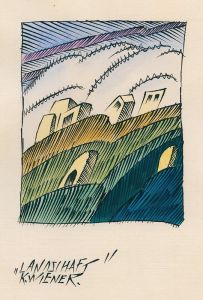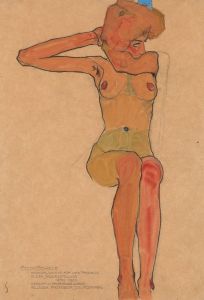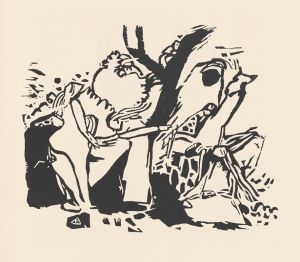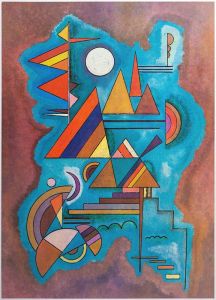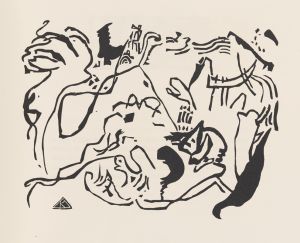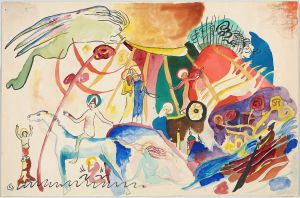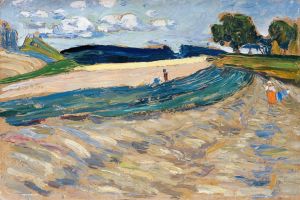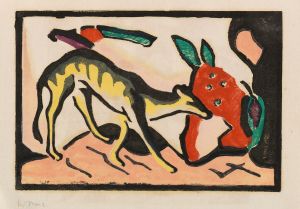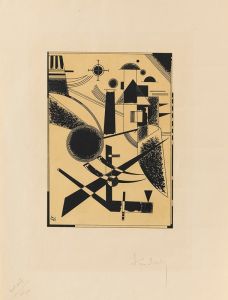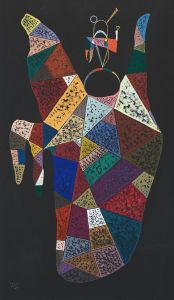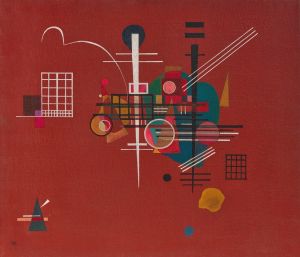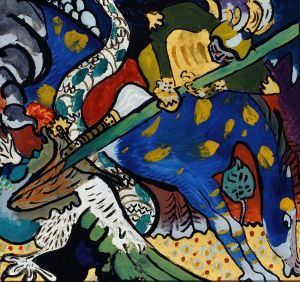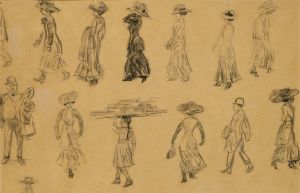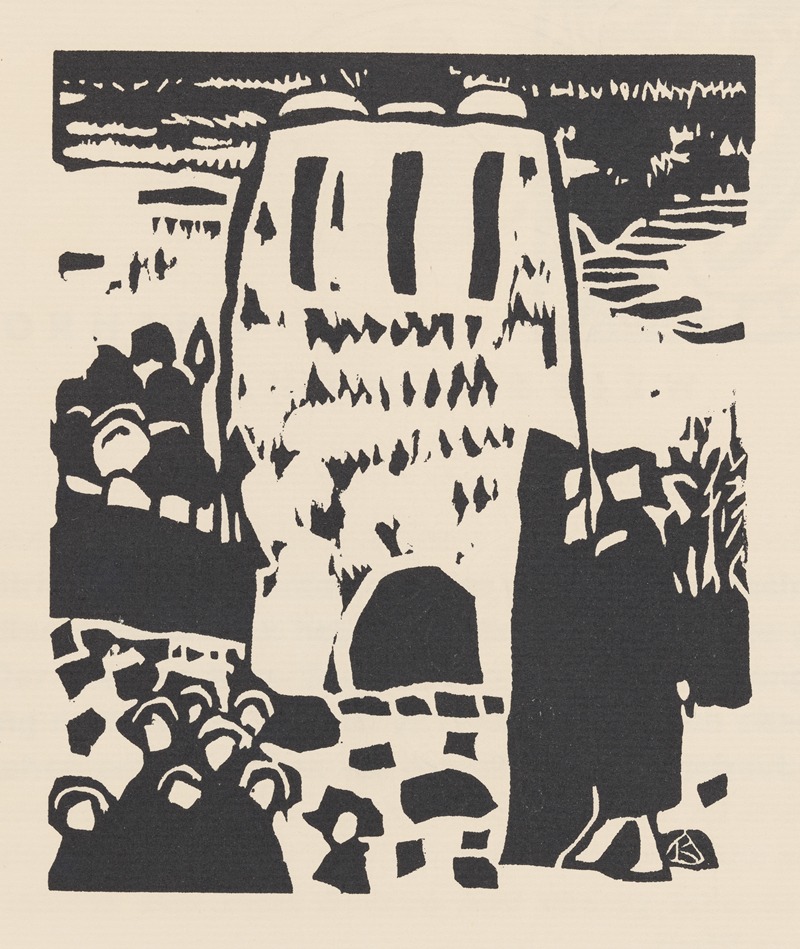
Klänge Pl.22
A hand-painted replica of Wassily Kandinsky’s masterpiece Klänge Pl.22, meticulously crafted by professional artists to capture the true essence of the original. Each piece is created with museum-quality canvas and rare mineral pigments, carefully painted by experienced artists with delicate brushstrokes and rich, layered colors to perfectly recreate the texture of the original artwork. Unlike machine-printed reproductions, this hand-painted version brings the painting to life, infused with the artist’s emotions and skill in every stroke. Whether for personal collection or home decoration, it instantly elevates the artistic atmosphere of any space.
Wassily Kandinsky's "Klänge Pl.22" is part of a significant body of work by the Russian painter and art theorist, who is often credited with painting one of the first purely abstract works. Kandinsky's contributions to the art world are profound, as he was a pioneer in the development of abstract art in the early 20th century. "Klänge" (meaning "Sounds" in German) is a collection of woodcuts and prose poems published by Kandinsky in 1913, and it is considered one of his most important works in the realm of printmaking and book art.
"Klänge Pl.22" is one of the woodcuts from this collection. The "Klänge" series is notable for its synthesis of visual art and poetry, reflecting Kandinsky's belief in the interconnectedness of the arts. This belief was central to his artistic philosophy, which held that color and form could evoke emotions and spiritual experiences independent of the natural world.
The woodcuts in "Klänge" are characterized by their abstract forms and bold use of color and line, which were innovative at the time. Kandinsky's work during this period was influenced by his interest in music and the idea that visual art could achieve the same emotional and spiritual resonance as a musical composition. This concept is evident in "Klänge," where the imagery often suggests movement and rhythm, akin to musical notes on a page.
Kandinsky's exploration of abstraction was also informed by his theoretical writings, particularly "Concerning the Spiritual in Art," published in 1911. In this text, he articulated his vision of art as a means of transcending the material world and accessing deeper spiritual truths. The woodcuts in "Klänge" can be seen as visual manifestations of these ideas, with their emphasis on form, color, and composition over representational accuracy.
The publication of "Klänge" was a collaborative effort, with Kandinsky working closely with the printer to achieve the desired effects in the woodcuts. This collaboration was crucial in realizing the delicate balance between text and image that characterizes the work. The book was published in an edition of 300 copies, making it a rare and valuable artifact in the history of modern art.
Kandinsky's work, including "Klänge Pl.22," has had a lasting impact on the development of abstract art. His innovative approach to form and color, as well as his integration of different artistic disciplines, paved the way for future generations of artists. The "Klänge" series, with its unique blend of visual and literary elements, remains a testament to Kandinsky's vision of art as a universal language capable of expressing the inexpressible.
In summary, "Klänge Pl.22" is a reflection of Wassily Kandinsky's pioneering efforts in abstract art and his belief in the spiritual potential of artistic expression. Through his innovative use of form and color, Kandinsky sought to create a new visual language that transcended the limitations of traditional representation, a pursuit that has left an indelible mark on the history of art.






